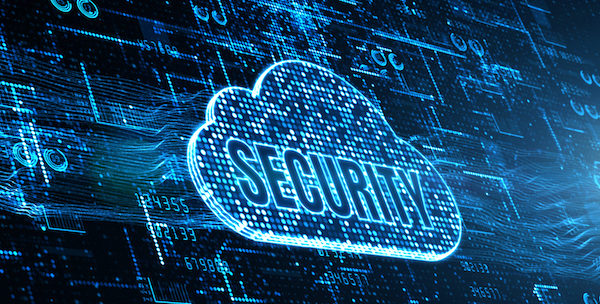Today’s news is getting more and more alarming. Crimes are growing, worsening, and mutating. What if the crimes you watch on TV, read in the morning paper, and hear on the radio actually happen to your internal systems and eventually destroy your data? It is bad luck enough for journalists to be held captive by terrorists or for a child to be held hostage by a drug addict. But what if the data so important in your systems, the information so private and confidential in your organization become the target for hostage and ransom by cyber criminals?
Ransomware is a type of malware wherein cybercriminals steal data and information from individuals and institutions and pressure them for money for the retrieval of the stolen data. In this day and age, it is no longer just human beings or material stuff anymore. Your data are already targeted and used by attackers to threaten victims for monetary gain.
Unfortunately, ransomware cases are increasing in number and worsening in the severity of damages. As a matter of fact, it’s becoming a worldwide concern, having been introduced into the global scene in 2017 through the strains WannaCry and Petya. Reports have it that WannaCry has penetrated and affected one hundred fifty countries and that the damages caused by these two are worth millions to billions. Aside from the great monetary loss, ransomware can also lead to disruptions in operations, civil liabilities, loss of data, and loss of customers’ trust and security.
Fortunately, there are possible helpful actions that individuals and institutions can practice in cases of actual ransomware attacks. The first step is being able to detect and recognize that an attack is occurring. After being made aware of the attack, carry out your response and recovery plan. Limit the coverage of the damage and stop the spread of the attack by turning off and disconnecting your endpoints and devices. Try restoring your data through your backup storage or through means of data recovery tools. Get rid of the ransomware off by using an anti-malware tool. Prevent reinfection by using patches to your systems and applications. Lastly, it is important to keep a record of the entire attack for an afterward filing of a report to the authorities.
Also, there are many feasible measures tips for an individual or an institution to get protected from the advent of ransomware, in order to get prepared in the actual event of such crime. Let’s examine these 6 tips to prevent from Ransomeware attacks.
1. Increase knowledge and develop awareness.
The first basic step of protection and prevention is knowing what you are staying away from. Different forms of ransomware are being developed and used for crimes, each having a unique feature, strategy, or method of attack. Be sure you are able to identify a ransomware attack and you are able to recognize the ransomware attacking you for you to determine your action plan. Stay updated with the latest news concerning crimes and the newest developments of prevention and protection.
2. Use a security tool/Have a security baseline.
Another basic component of protection and prevention is having a solid security baseline. It is recommended for your organization to have concrete guidelines on safety and security to be implemented and to be maintained. As with all businesses and establishments, having an effective security tool like multi-factor authentication is of prime importance. Use this tool at all endpoints of your systems and networks and develop and hasten it to add more and more layers of protection.
3. Be Skepticism
Ransomware comes and happens in different forms, through different means, in different settings. It may appear as a pop-up message, present itself as an electronic mail, or manifest as an advertisement. Be wise enough never to trust, believe, and respond to anything like these, especially if there is no need to do so. Thinking twice is a form of being wise, and being wise is a form of being safe.
4. Backup your files.
Cyber crises may vary in form or differ in causes and results, but all have a common denominator which is the potential loss of data. The effects of losing data can be very complicated and distressful, but the prevention of losing data can be so simple and so quick just by backing them up. Do not trust and rely on online storage alone or hard drive alone. The way towards strong, solid storage of data is by combining the two: online storage and hard drive storage. In circumstances like lost devices or intrusions into systems and cybercriminals demanding payment in exchange for the stolen data. You do not have to prepare any ransom money or to retrieve any lost data because you have your data backed up and secured.
5. Have an incident response and recovery plan.
Safety and security are not just staying away from crises; it is also knowing and practicing how to troubleshoot and how to recover from such dilemmas. Having an incident response and recovery plan is as vital and as helpful as having a prevention plan. Know what to do before, during, and after a cyber crisis. Prepare the resources, manpower, and tools & equipment to be needed in a cyber attack. It is wise to stay away from problems, but it is equally and essentially wise to anticipate problems and prepare for them beforehand.
6. Train your staff and employees.
The safety and security of an organization roots from and relies on the individual unified efforts of its members. It is a mandate to have every single person in an institution to be knowledgeable and proactive in promoting and sustaining cybersecurity. Educate your people about the reality of cyber crises, especially ransomware. Have them know and follow the company’s guidelines on safety and security. Train them in carrying out the company’s response and recovery plan in cases of actual incidents. Remember, safety and security are a work of unity.
Ransomware is, indeed, a peril to businesses and organizations. There is a great possibility for it to grow and to worsen in the future, affecting populations and damaging more operations. Luckily, measures and tools for cybersecurity like Twizo Authenticate are available to address and combat this. Design your own response and recovery plan, get your own data recovery and anti-malware tools, adapt your own safety and security guidelines. Remember, above all these alarming and frightening cyber crimes; safety and security can be yours, and it can be yours now.
















